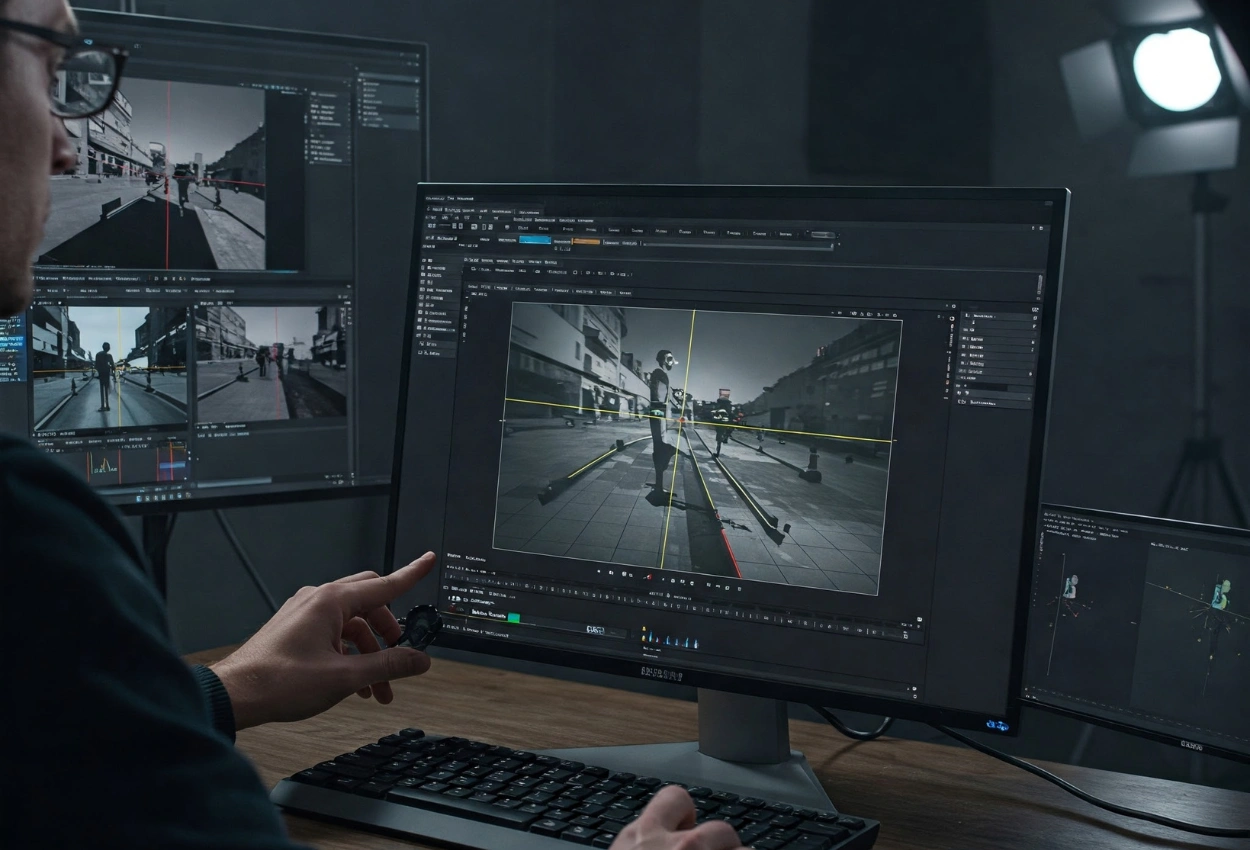
What is Matchmoving in VFX?
Matchmoving is the invisible thread that makes a digital dragon feel right at home in a medieval castle or a futuristic skyline that looks like it truly exists.
From the mind-bending action of The Matrix to the breathtaking landscapes of Avatar and Interstellar, matchmoving is the wizardry that keeps audiences spellbound. But how does it work, and why is it the backbone of modern filmmaking? Let’s dive into the magic behind the movies!
Understanding Matchmoving in VFX
Matchmoving is the process of tracking the movement of a camera in a live-action shot and replicating that motion within a 3D digital space. This allows VFX artists to add CG elements that match the perspective, scale, and movement of the original footage. The goal is to make these elements appear as though they were part of the scene when it was filmed.
For example, imagine a scene where a giant spaceship needs to be inserted into the sky above a city. Matchmoving ensures that the spacecraft moves naturally with the camera’s perspective, making it look like it was truly captured in the original shot.
Types of Matchmoving
There are several types of matchmoving techniques, each serving a specific purpose in visual effects:
2D Matchmoving
This technique involves tracking objects in a flat plane, capturing movement in two dimensions. It is primarily used for simpler camera movements where elements shift horizontally or vertically without changing depth.
3D Matchmoving
Unlike 2D matchmoving, this method tracks movement in all directions (left/right, up/down, forward/backward). It is essential for scenes with significant depth changes, such as dynamic action sequences or aerial shots.
Object Tracking
This approach focuses on tracking the movement of specific objects rather than the camera itself. It is commonly used for replacing or enhancing moving objects in a scene, like adding digital armor to an actor or modifying a car in a chase sequence.
Camera Tracking
This technique involves capturing the movement of the entire camera rather than individual objects. It helps replicate the camera’s real-world motion in a virtual space, allowing CG elements to blend seamlessly into the shot.
Hybrid Tracking
A combination of 2D and 3D matchmoving, hybrid tracking is used when scenes require both planar and depth-based tracking. This is useful for shots where foreground and background elements must be precisely tracked.
How Matchmoving Works
Contrary to popular belief, matchmoving is not just a post-production technique—it also plays a vital role in pre-production. Here’s a breakdown of how matchmoving is applied in both stages:
Pre-Production Process
1.Collaborating with filmmakers: Matchmove artists work closely with directors and VFX teams to plan shots and determine where tracking markers should be placed on set.
2.Planning Camera movements: Understanding how the camera will move helps ensure that CG elements interact seamlessly with live-action footage.
3.Visiting Shooting locations: Artists assess the filming location to gather measurements and details to aid in accurate digital integration later.
4.Measuring the set: Precise measurements of objects interacting with CG elements (e.g., a CG character sitting in an actual chair) are recorded.
5.Discussing camera equipment: Understanding the type of cameras and lenses used on set allows for accurate digital replication.
Post-Production Process
1.Receiving footage and instructions: The matchmove team receives the live-action footage and technical details about the camera, lens, and frame rate.
2.Analyzing and tracking footage: The footage is studied carefully, and tracking markers are identified. Specialized software is used to detect movement and align digital elements accordingly.
3.Creating a virtual camera: The tracking data generates a digital camera that mimics the real-world camera’s motion, ensuring accurate placement of CG elements.
4.Adding 3D elements: Once the matchmoving data is complete, VFX artists integrate CG models, textures, and animations into the scene. The elements are then refined to match the lighting and composition of the original footage.
Best Matchmoving Techniques
To achieve realistic results, our matchmoving artists follow key techniques:
- Use high-quality footage: Clear and sharp video helps improve tracking accuracy.
- Place visible tracking markers: Distinct markers help software track movements more effectively.
- Track multiple points: More tracking points improve precision.
- Manually adjust markers when needed: Software tracking isn’t always perfect, so manual refinement is crucial.
- Correct lens distortion: Adjustments ensure that CG elements blend naturally.
- Match lighting conditions: Lighting consistency between CG and real footage is essential for realism.
- Use reference objects: Real-world objects help maintain proper scale and alignment.
Matchmoving Software
Several tools are available for matchmoving, each offering unique features:
- Mocha Pro: Ideal for planar tracking and object removal.
- Adobe After Effects: Great for 2D motion tracking.
- Nuke: Industry-standard for high-end compositing and tracking.
- PFTrack: Powerful 3D tracking capabilities.
- Boujou: Automatic camera tracking for quick results.
Final Thoughts
Matchmoving is one of the most potent techniques in VFX, helping filmmakers bring impossible visions to life. Whether integrating a futuristic city into a skyline or making a superhero fly through the air, this technique ensures seamless realism in visual storytelling.
At Motion Effects, we create worlds, amplify emotions, and push the boundaries of imagination. Whether it’s seamless matchmoving, dynamic CGI, or precision compositing, our VFX experts craft visuals that captivate and inspire. Let’s turn your creative vision into a cinematic masterpiece.
Partner with us today and experience the future of VFX!
